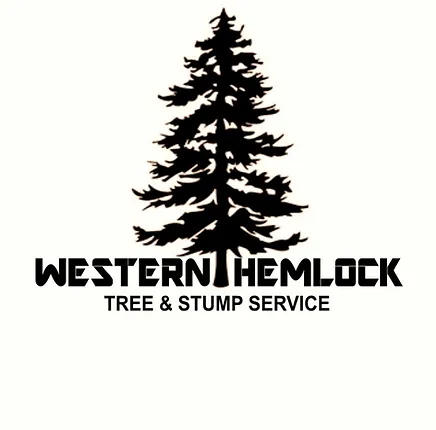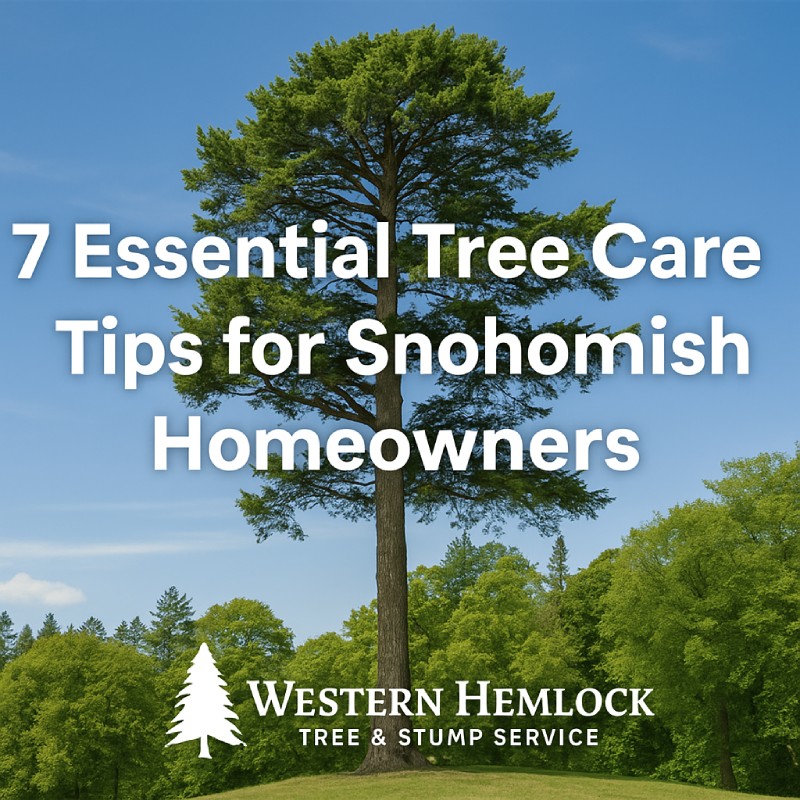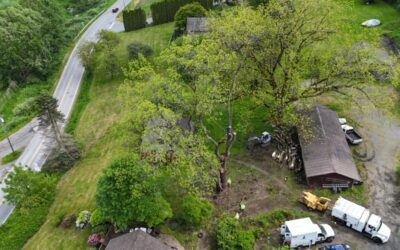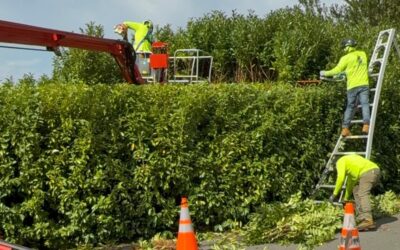Keeping Snohomish Trees Healthy: 7 Essential Tree Care Tips for Homeowners
Serving Snohomish, Everett, Mill Creek, Bothell & surrounding areas
Western Hemlock Tree & Stump Service
📞 425-374-8996 • 📍 18305 59th Ave SE, Snohomish, WA 98296 •
✉️ claudia@westernhemlockts.com
Licensed, bonded & insured | WA Contractor License # WESTEHT790JZ
Trees are more than ornamentation—in Snohomish County they provide shade, reduce erosion,
improve air quality, and add property value. Left unmanaged, they can become hazards during
Pacific Northwest storms or develop root issues that damage sidewalks and foundations.
Use these seven local, homeowner-friendly tips to keep your trees safe and thriving.
1) Start with a Professional Health Assessment
A certified arborist can detect problems early, including:
- Decay or fungal activity in the trunk
- Cracks or splitting in major limbs
- Deadwood and pest infestations
- Root stress, girdling roots, or soil issues
We provide free estimates and clear recommendations so you can make informed decisions.
2) Prune Smartly—But Don’t Overdo It
- When: Late winter to early spring suits most species in our region.
- What: Remove dead/diseased wood first; correct rubbing or crossing branches.
- How much: Avoid taking more than ~25% of the canopy in a single season.
Our team specializes in structural pruning and canopy reduction that balances safety and curb appeal.
3) Manage Tree Roots & Soil Conditions
Moist, heavy soils are common around Snohomish. Help roots thrive by:
- Mulching 2–4″ in a wide ring—keep mulch a few inches away from the trunk.
- Avoiding soil piles or landscaping fabric tight to the trunk flare.
- Considering aeration or drainage improvements where soil is compacted or waterlogged.
4) Know When a Tree Needs Removal or Bracing
Some cases call for professional removal or support systems:
- Sudden leaning toward structures
- Major trunk cracks or cavities
- Recurring pests/disease or significant dieback
- Trees planted too close to buildings or utilities
We also install cabling & bracing to stabilize weak or splitting trees when appropriate.
5) Don’t Forget Stump Grinding & Removal
Old stumps create trip hazards, harbor pests, and block new landscaping. Our stump grinding
thoroughly removes roots so you can replant, sod, or hardscape without obstacles.
6) Be Prepared for Emergencies & Storm Damage
- Save a reliable local emergency number (ours is 425-374-8996).
- Prune hazardous limbs before fall and winter storm cycles.
- Never attempt dangerous removals yourself—downed or hung-up limbs are unpredictable.
We offer 24/7 storm cleanup and emergency tree removal to restore safety fast.
7) Plan New Tree Planting Wisely
Choose species that excel in the Pacific Northwest and give them room to mature:
- Favor native or PN-adapted species for better resilience and lower maintenance.
- Mind spacing from buildings, sidewalks, and power lines.
- Avoid planting too close to foundations, driveways, or septic fields.
Fun fact: the Western Hemlock (Tsuga heterophylla)—our namesake—is Washington’s state tree.
Why Snohomish & Everett Homeowners Choose Western Hemlock
- Local expertise: Deep knowledge of Snohomish/King County species and soils.
- Certified arborists: Industry-standard safety and pruning practices.
- Fully licensed & insured: Peace of mind on every job site.
- Responsive service: Free estimates, permitting guidance, and meticulous cleanup.
- Service areas: Snohomish, Mill Creek, Everett, Bothell, Bellevue, and nearby.
Frequently Asked Questions About Tree Care in Snohomish
1. How often should I prune my trees in Snohomish County?
Most trees in Snohomish and Everett should be pruned every 2–3 years to remove
deadwood and maintain structure. Fast-growing or storm-prone trees may benefit
from annual inspections. Our certified arborists can help determine the right
schedule for your specific species.
2. What’s the best time of year to trim trees in Washington State?
Late winter or early spring—before trees start new growth—is ideal for most
Pacific Northwest species. This timing reduces stress and promotes healthy
regrowth. However, dead or hazardous limbs can be removed safely at any time
of year.
3. Do I need a permit to remove a tree on my property?
Depending on your city (Snohomish, Everett, or Mill Creek), certain removals may
require a permit—especially for protected or large heritage trees. Western Hemlock
Tree & Stump Service can guide you through local permitting requirements
and handle documentation if needed.
4. How do I know if a tree is dangerous or diseased?
Warning signs include leaning trunks, cracking bark, hollow cavities, or fungus
growth near the base. If branches drop unexpectedly or leaves thin out suddenly,
it’s time for a professional inspection. Our team offers free safety assessments
and recommendations.
5. What’s the difference between stump grinding and full stump removal?
Stump grinding removes the visible portion of the stump below ground
level, making the area ready for replanting or landscaping. Full removal
takes out the entire root system but requires more excavation. Most homeowners choose
stump grinding for a faster, cleaner result.
6. Does Western Hemlock offer emergency tree service after storms?
Yes! We provide 24/7 emergency tree removal and storm cleanup across Snohomish,
Everett, Bothell, and nearby cities. If a tree falls or threatens your property,
call us immediately at 425-374-8996.



